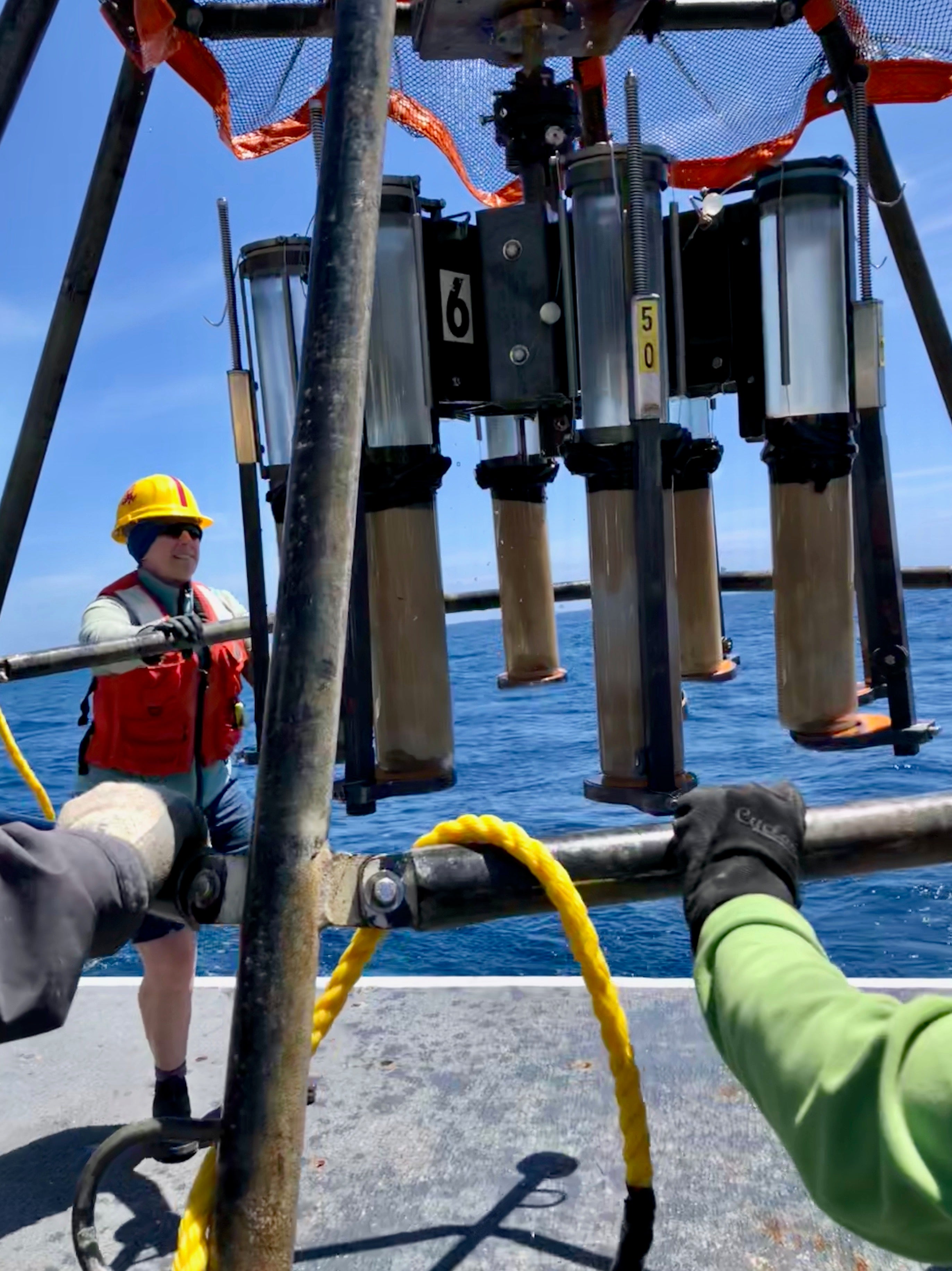ASU professor accepts international award for research in marine, aquatic sciences

ASU Professor Hilairy Hartnett. Photo courtesy ASU
Research led by Arizona State University Professor Hilairy Hartnett is being honored with the 2022 John Martin Award from the Association for the Sciences of Limnology and Oceanography (ASLO).
The ASLO John Martin Award, established in 2005, recognizes a paper in aquatic sciences that is judged to have had a high impact on subsequent research and that has led to a fundamental shift in understanding.
“Professor Hartnett is a leader in the study of organic carbon in sedimentary environments,” said Meenakshi Wadhwa, director of the ASU School of Earth and Space Exploration. “This award is a testament to how influential and foundational her work has been in her field.”
Hartnett is being recognized for her research published in Nature in 1998, titled “Influence of oxygen exposure time on organic carbon preservation in continental margin sediments,” with University of Washington co-authors Richard Keil, the late John Hedges and Allan Devol.
This research provided the first evidence that burial of organic matter at the seafloor is a direct control on oxygen in the Earth’s atmosphere, which has implications for the Earth’s carbon cycle and the stability of oxygen in our atmosphere.
As Hartnett explains it, organic carbon and oxygen are produced during photosynthesis. If the carbon escapes degradation and gets buried in sediments, the oxygen is free to build up in the atmosphere, which is good for organisms like humans who breathe oxygen. More atmospheric oxygen leads to increased carbon degradation, and the oxygen decreases. This negative feedback prevents oxygen from getting too high or too low in the atmosphere.
This idea itself wasn’t new, but to show it directly, Hartnett and her team needed to know how long the sediment was exposed to oxygen, and what fraction of the carbon in the sediments is preserved. While these are simple concepts, they are hard to measure. For every location, they had to measure oxygen flux at the seafloor and collect cores for chemical analysis of sediments and porewaters.
Hartnett (in Sparky hard hat) on the research cruise “Coring to Reconstruct Ocean Circulation and Carbon Dioxide Across 2 Seas (CROCCA-2S),” collecting sediment cores from the Southern Indian Ocean floor in 2019. The cores are “samples of the past,” and their chemistry holds clues to the history of Earth’s climate over time. Photo by N. Umling
“The tool developed by Hartnett and co-authors to predict carbon burial efficiency was elegant and revolutionary to the field,” ASLO President Roxane Maranger said. “More than 20 years later, the oxygen exposure time concept continues to be integral to oceanography and limnology, particularly as we continue to assess how climate change impacts on aquatic ecosystem oxygen dynamics will influence carbon sediment burial.”
Hartnett joined ASU in 2003, where she is a professor at ASU’s School of Earth and Space Exploration and the School of Molecular Sciences, as well as a Julie Ann Wrigley Global Futures Laboratory senior sustainability scientist. She also directs the Carbon and Nitrogen Dynamics Lab at ASU, where her research focuses on biogeochemistry and organic geochemistry in aquatic systems, with applications for astrobiology, urban ecology and life in the Anthropocenerelating to or denoting the current geological age, viewed as the period during which human activity has been been the dominant influence on climate and the environment.
“It is a tremendous honor to have our paper recognized with the John Martin Award — the papers that have received it are all true ‘must reads’ in the marine and aquatic sciences,” Hartnett said. “Looking back, I can see how my early work on the biogeochemistry of low oxygen systems has informed my research for over 20 years. It led to many cool projects and collaborations — including a recent cruise investigating sediments in the Southern Indian Ocean. The work is even helping to frame ideas about biosignatures for anoxic worlds beyond Earth!”
“We knew our demonstration of the negative feedback between organic burial in sediments and oxygen in the oceans and atmosphere was important when we wrote the paper,” Hartnett added, “but I never imagined it would continue to influence people’s thinking for such a long time.”
The ASLO 2022 John Martin Award ceremony will be held on May 18 at the ASLO Joint Aquatic Sciences meeting in Grand Rapids, Michigan, where Hartnett has been invited to give a plenary talk.
More Science and technology

ASU at the heart of the state's revitalized microelectronics industry
A stronger local economy, more reliable technology, and a future where our computers and devices do the impossible: that’s the…

Breakthrough copper alloy achieves unprecedented high-temperature performance
A team of researchers from Arizona State University, the U.S. Army Research Laboratory, Lehigh University and Louisiana State…

4 ASU researchers named senior members of the National Academy of Inventors
The National Academy of Inventors recently named four Arizona State University researchers as senior members to the prestigious…


